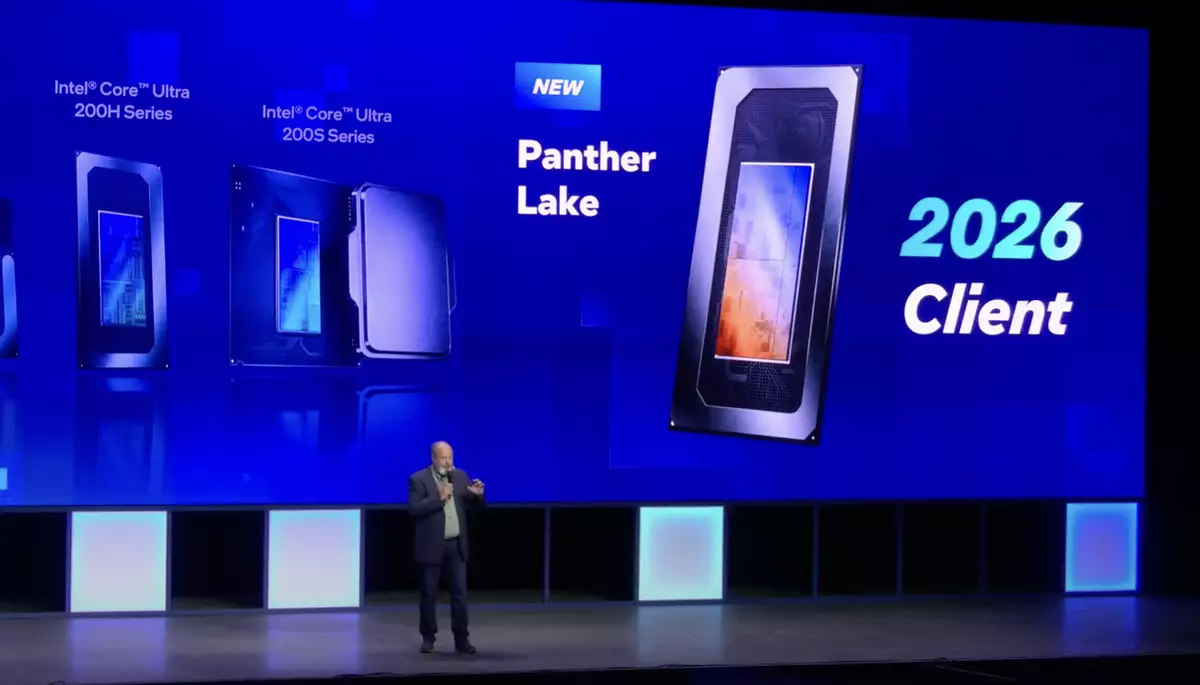The technology landscape is undergoing continuous evolution, and at its forefront is Intel Corporation, a giant once synonymous with chip manufacturing excellence. With the appointment of new CEO Lip-Bu Tan, Intel seems poised to recalibrate its trajectory as it navigates the shifting tides of competition and innovation. Presenting his vision at the Intel Vision 2025 conference, Tan underscored the company’s commitment to regaining its technological crown, though the event also highlighted the reality of the challenges ahead.
Tan’s leadership style brings a refreshing approach, focusing on execution alongside innovation. His remarks about Intel’s upcoming Panther Lake CPU, although lacking in sensational announcements, reflect a cautious optimism aimed at stakeholders and consumers alike. Acknowledging both significant advancements and the inherent delays of the product pipeline, Tan and his team are deliberate in managing expectations—a crucial strategy in an industry often driven by hype.
Decoding Panther Lake: A Critical Analysis
The Panther Lake CPU, which is slated for production later this year and expected to hit the market in 2026, embodies the duality of hope and uncertainty that Intel currently faces. This new chip promises to combine the power efficiency of the Lunar Lake architecture with the robust performance of its Arrow Lake counterpart. However, the path to realizing this potential is riddled with complexities.
Recent statements from Jim Johnson, Intel’s head of client computing, illuminate some critical aspects of Panther Lake. While the combination of power efficiency and performance is undoubtedly appealing, it raises questions about its actualization in the face of Intel’s history with ambitious technology nodes. Historically, Intel has struggled to meet production timelines, a trend that appears to continue as the expected release date has shifted from 2024 to 2026, potentially pushing production start dates into late 2025.
This delay could be characterized as a pivotal moment for Intel, particularly in its quest to emerge from the shadow of competitors like TSMC. The challenges associated with the transition to the 18A manufacturing process, including reports of poor yields and ambitious specifications, mirror the difficulties Intel faced during its ill-fated 10nm journey. This parallels with the industry’s quick pace, where competitors rapidly innovate and roll out technology while Intel grapples with latency.
Technological Ambitions and Risks
The promise of Panther Lake rests on significant advancements, such as the introduction of backside power technology, which could alter the landscape of CPU design. However, this comes at a cost—Intel’s ambition to not only catch up but potentially leapfrog competition carries inherent risks. While the idea of a CPU with battery efficiency on par with low-power designs is undoubtedly attractive, the execution remains to be seen.
Intel’s previous missteps lead to skepticism among tech aficionados and industry watchers alike. If history has taught us anything, it’s that innovation in semiconductors is a double-edged sword, where the cost of failure could be significantly detrimental. The lingering question remains: can Intel capitalize on its ambitious technologies, or will it find itself in a familiar cycle of overpromising and underdelivering?
As the company steps into this era of transformation, its ability to restore faith in its product pipeline will ultimately determine its capability to reclaim market leadership. Analysts and enthusiasts alike are watching keenly, gauging the pace at which Intel can actualize Panther Lake’s promises in light of existing hurdles.
The Competitive Landscape Ahead
In the ever-evolving semiconductor arena, competition is fierce, and time is of the essence. Intel’s rivals, particularly TSMC, continue to innovate rapidly, rolling out advanced nodes that propel performance while reducing costs. TSMC’s N3 and imminent N2 nodes are notable challengers that Intel must contend with. The efficiency and effectiveness of these technologies underscore the sheer urgency of Intel’s mission: to not only catch up but to lead once more.
As we eagerly await more concrete updates from Intel regarding Panther Lake and beyond, it’s clear that a significant transformation is necessary. The technological race has escalated, and Intel’s narrative is one of resilience. Whether Lip-Bu Tan and his team can turn visions into reality remains a central theme in the saga of Intel’s resurgence. Only time will tell if the once-mighty giant can once again rise to the occasion, or if it will become relegated to the annals of technological history as a cautionary tale of ambition unfulfilled.

